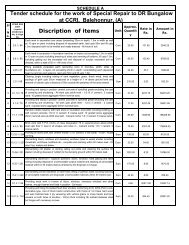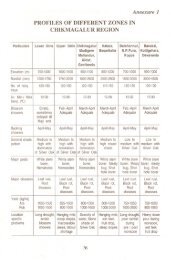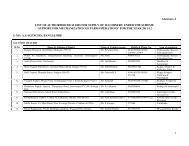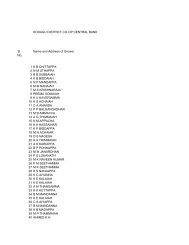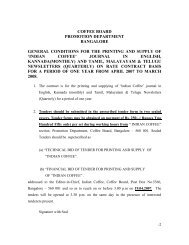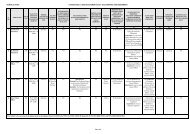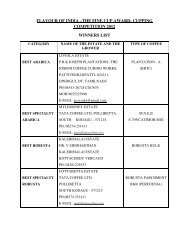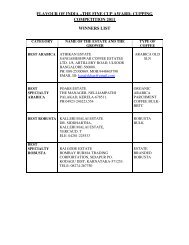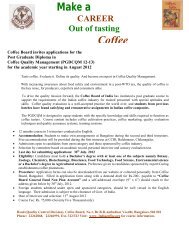COFFEE CULTIVATION GUIDE - Coffee Board of India
COFFEE CULTIVATION GUIDE - Coffee Board of India
COFFEE CULTIVATION GUIDE - Coffee Board of India
Create successful ePaper yourself
Turn your PDF publications into a flip-book with our unique Google optimized e-Paper software.
50<br />
9. Compost Preparation<br />
Shade tree leaf litter, weeded materials, fallen twigs, green leaves, c<strong>of</strong>fee skin,<br />
cherry and parchment husk are the raw materials for the preparation <strong>of</strong> compost in the<br />
estate level. In addition to these, coir pith, cow dung and domestic wastes can also be<br />
used for the preparation <strong>of</strong> compost depending on their availability in the farm level.<br />
The c<strong>of</strong>fee effluent can be used for moistening the compost pits as well as to enrich<br />
the quality <strong>of</strong> the compost. Earth worms can be used to degrade the c<strong>of</strong>fee processing<br />
wastes mixed with cow dung and domestic wastes. The compost should be applied to<br />
the fields preferably during the post monsoon period for better efficiency. If compost<br />
is applied during the summer months, the mineralization <strong>of</strong> the compost will be slow<br />
and chances <strong>of</strong> losing the mineral content are more during the dry season.<br />
COMPOST HEAPS<br />
10.Nursery<br />
For basket nursery one should use the polythene bags <strong>of</strong> the dimension 6 X 9<br />
(b X h) inches <strong>of</strong> 150 gauges. If lower gauge bags are used, there is a chance that the<br />
bags may break when soil is filled. Use <strong>of</strong> lower dimension backs severely hinders the<br />
healthy development <strong>of</strong> roots. Further, 12 uniform holes (3 mm) at equidistance<br />
should be made on the nursery bags to facilitate easy air circulation for the growing<br />
seedlings as well as to allow the excess water to flow out. Stagnation <strong>of</strong> water in the<br />
bags results in the rotting <strong>of</strong> seedlings.<br />
A nursery mixture <strong>of</strong> 6 parts <strong>of</strong> sieved jungle soil( free from nematodes and other<br />
pests), two parts <strong>of</strong> well rotted cattle manure or compost and one part <strong>of</strong> coarse river<br />
sand (do not use sea sand as it contains sodium which is harmful to the seedlings)<br />
should be prepared and mixed well to fill the nursery bags. If the jungle soils are not<br />
available, it can be substituted with sieved surface soil mixed with compost or vermin<br />
compost. Prior to planting, the nursery bags should be gently watered and a vertical<br />
hole <strong>of</strong> about 5 cm deep should be made in the soil at the centre <strong>of</strong> the bags. The<br />
c<strong>of</strong>fee seedlings at button stage are transplanted into the nursery bags. Seedlings<br />
should not be planted deep in the nursery bags and after planting, the seedlings should<br />
be watered daily in the morning times. Nursery should be cleaned <strong>of</strong>f from weeds and<br />
50



